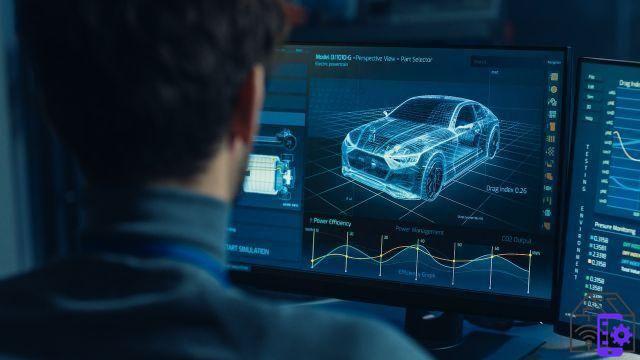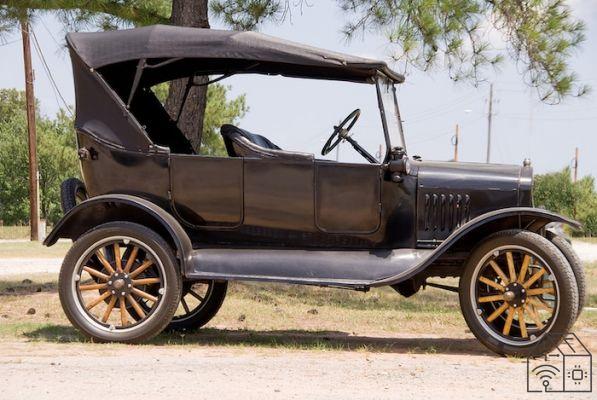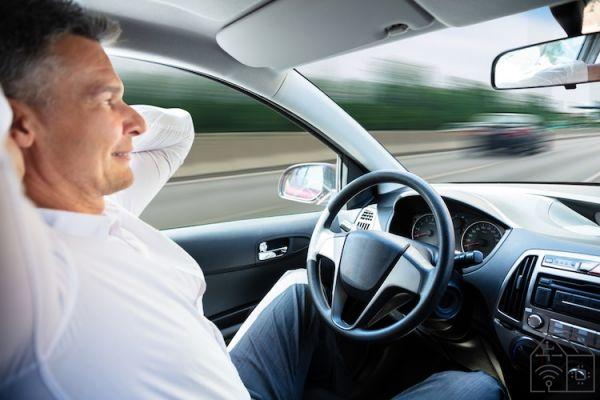
To find out how the car has changed, let's start, as is now the tradition for this column, from its definition, this time less complicated than usual.
The car, or motor car, is a vehicle on wheels propelled by an engine capable of moving autonomously on the earth's surface. Driven by a driver, it is capable of carrying a limited number of people or goods.
All clear, even if it must be added that for the foreseeable future an attempt is being made to make part of the definition superfluous, the one that requires the presence of a driver.
The birth of the automobile: Cugnot's chariot
To understand how the automobile has changed, we must first date its first prototypes to the time of the invention of the steam engine. It is there that the invention of what for some can already be considered as the first automobile in history is located (even if designs for wagons capable of moving on their own date back to the Renaissance).
This is the Cugnot's chariot, invented in 1769 by the French engineer Joseph Nicolas Cugnot. It was a three-wheeled wagon with a wooden frame and a driving and steering front wheel. The steam engine worked thanks to a front boiler that moved two vertical cylinders, guaranteeing a total displacement of about 62.000 cubic centimeters.

The braking system was missing, and Cugnot definitely noticed it: in one of the first experiments his wagon crashed into a wall.
In a second model, 1771, the engineer had finally added brakes. The vehicle could carry four people and reach a speed of 4 kilometers per hour.
How the car changed in the nineteenth century
However, it was during the nineteenth century that the automobile asserted itself, spread and improved.
Two fundamental dates to understand how the car has changed are 1804 and 1839. In 1804 the French inventor Isaac de Rivaz developed the first two-stroke engine, and in 1939 the Scottish Robert Anderson invented the first electric car.
The subsequent stages mark in some way the entry of the car into society.
It was 1864 when the Italian inventor Innocenzo Manzetti created the first steam carriage capable of circulating on the street. Twelve years later, in 1876, the German engineer Nikolaus August Otto built the first four-stroke engine.
In the XNUMXs, the first car manufacturers were born in France and Germany, and in 1886 Karl Benz presented the first endothermic (internal combustion) engine.
The spread of passenger cars is well demonstrated by the first car race, the Paris-Rouen in 1894.
In 1899, when the first rudimentary clutch was introduced, there were already car models capable of traveling at 100 kilometers per hour.
How the automobile changed in the early twentieth century
Another fundamental point to understand how the car has changed is to be fixed in the years of the First World War.
Until then, different types of fuel had been tried, including oil and alcohol, but petrol models are now making a name for themselves.
Two pivotal dates of the early twentieth century for the development of the car are 1908 and 1910. In 1908, with the release on the market of the Ford Model T, the automotive industry was symbolically born, which from 1913 will use the assembly line. And in 1910 the American inventor Charles Franklin Kettering included the electric starter in Cadillacs.
The dictatorships pushed the production of cars: in 1936 the Fiat Topolino in Italy and the Volkswagen Beetle in Germany were born almost in unison.
In 1948 the radial tires appeared, and in 1949 the injection engine. The economic boom, then, will give the decisive impetus to the diffusion of the car.

How the car changed in the late twentieth century
Starting from the 1973 oil crisis, in the second half of the twentieth century there was a focus on alternative fuels to gasoline, such as the GPL.
The topic has become increasingly central in recent years, when the growing attention to the worrying climatic conditions of the planet has made the concepts of sustainable mobility and renewable energy more and more urgent.
Hence the development of innovative electric or hybrid car models, which, in addition to significantly reducing CO2 consumption, begin to enjoy some concessions, from the exemption of the car tax to state incentives, the so-called eco-bonuses.
 Fiat 500. Ed. illustrated
Fiat 500. Ed. illustrated
- Deganello, Elvio (Author)
The cars of the future
The machines of the near future will be increasingly governed by technology, and the demand for human intervention will be less and less.
These are the so-called self-driving cars, developed by companies such as Tesla, for which an increasingly greater level of independence is expected, from 0 to 5.
To date, tests have already been carried out with level 4 cars, in which humans can only drive the vehicle in special cases, for example in severe weather conditions.
When (and if) you reach level 5, that of complete autonomy, the concept of driver will no longer exist (and not even the steering wheel and pedals).
But at that point, as we said at the beginning, the definition of automobile will have to be rewritten.




















![[Review] Samsung Powerbot VR7000: the robot vacuum cleaner from Star Wars](/images/posts/6bc44de38605b5c0fa12661febb1f8af-0.jpg)





